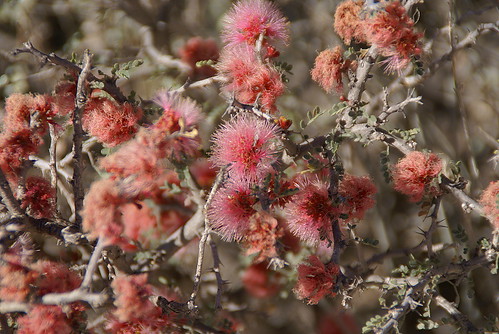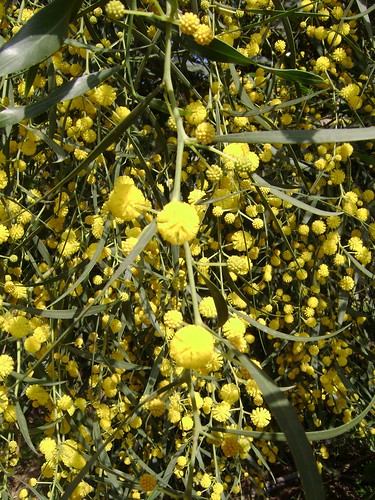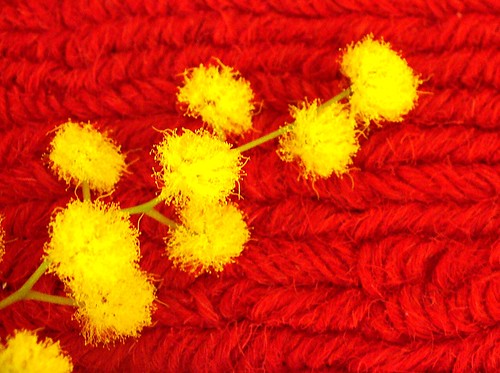Mimosaique

Pompones rosa, Fairy duster, originally uploaded by fvaldes.
First of all, the name for this mimosa perfume is genius in my opinion. It is indeed mimosaique rather than pure mimosa. From all the mimosa perfumes I’ve sampled it is the most perfumey. While Mimosa pour Moi is a sheer, leafy twiggy mimosa soliflore, Mimosaique is floral and powdery through and through. More floral than the flowering mimosa is in my opinion. This is in large due to the aldehydes present in this perfume, as well as other floral notes such as jasmine, paired with the powderiness of orris root. The initial aldehydic-perfumey impression wares off after the perfume is worn for a while and the mysterious mimosa note becomes more pronounced, as well as what I suspect to be a sheer yet still powdery musk base.
While I found the perfumey character of Sacrebleu intriguing (as it unfolds into many facets as it develops on the skin) I found Mimosaique to be far less interesting. However, I can see its appeal as a perfume that is equally simple (a soliflore) and sophisticated (the ladylike aldehydic impression).
Mimosaique is said to also include anise note, a note I did not detect in the few times I’ve worn Mimosaique. But alas, my little vial of Mimosaique sprang out of the ziplock envelope I had while traveling and collapsed to the tiled floor where it emptied its content and broke with no repair. I will have to get back to this one for re-sniffing and evaluating. Anise and orris is a combination familiar from the Guerlain heritage, a dynasty Patricia de Nicolai belongs to.
To read another opinions of Mimosaique, visit Cognoscented.





